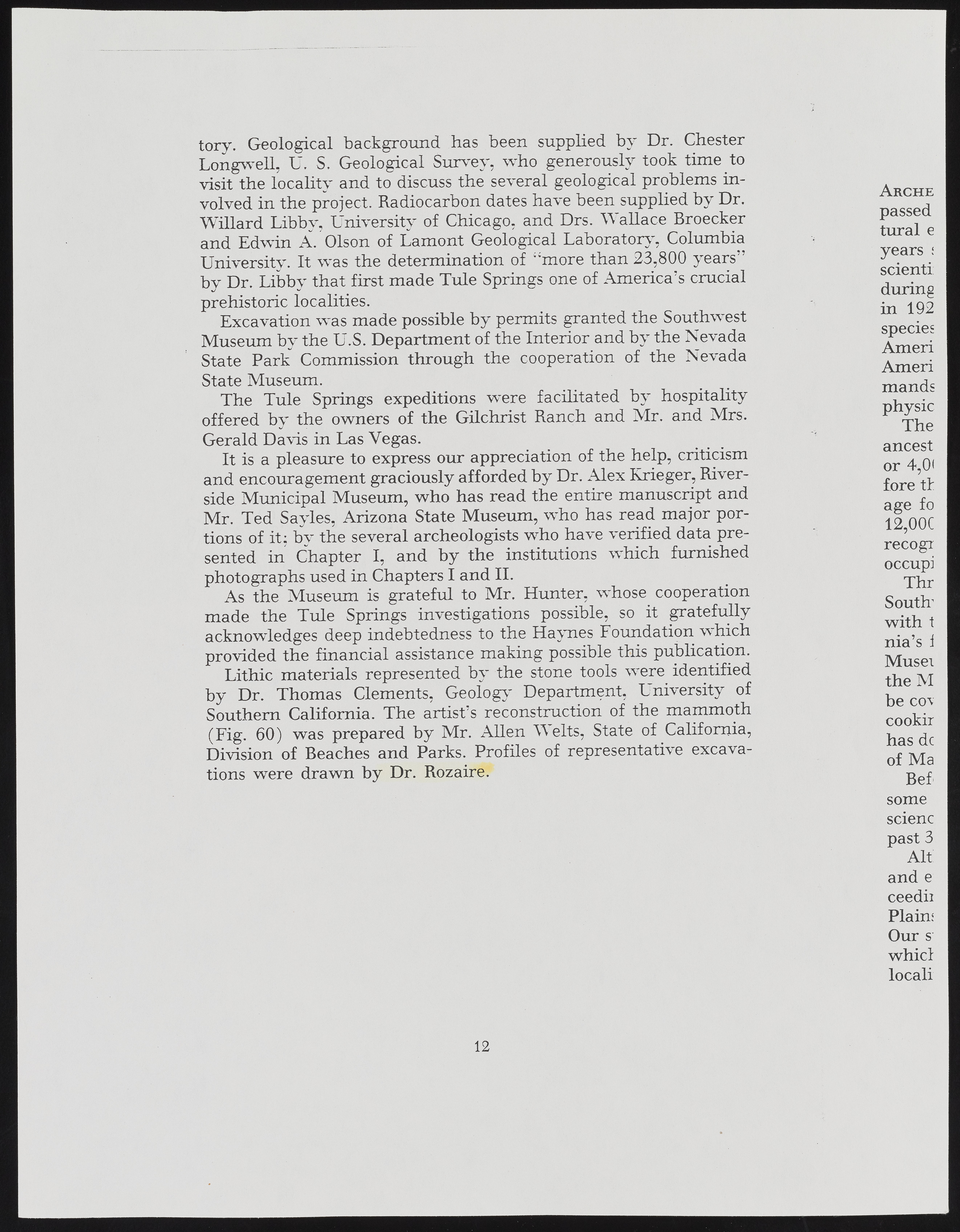Copyright & Fair-use Agreement
UNLV Special Collections provides copies of materials to facilitate private study, scholarship, or research. Material not in the public domain may be used according to fair use of copyrighted materials as defined by copyright law. Please cite us.
Please note that UNLV may not own the copyright to these materials and cannot provide permission to publish or distribute materials when UNLV is not the copyright holder. The user is solely responsible for determining the copyright status of materials and obtaining permission to use material from the copyright holder and for determining whether any permissions relating to any other rights are necessary for the intended use, and for obtaining all required permissions beyond that allowed by fair use.
Read more about our reproduction and use policy.
I agree.Information
Digital ID
Permalink
Details
Member of
More Info
Rights
Digital Provenance
Publisher
Transcription
tory. Geological background has been supplied by Dr. Chester Longwell, U. S. Geological Survey, who generously took time to visit the locality and to discuss the several geological problems involved in the project. Radiocarbon dates have been supplied by Dr. W illard Libby, University of Chicago, and Drs. Wallace Broecker and Edwin A. Olson of Lamont Geological Laboratory, Columbia University. It was the determ ination of “more than 23,800 years” by Dr. Libby th at first made Tule Springs one of America's crucial prehistoric localities. Excavation was made possible by permits granted the Southwest Museum by the U.S. Departm ent of the Interior and by the Nevada State Park Commission through the cooperation of the Nevada State Museum. The Tule Springs expeditions were facilitated by hospitality offered bv the owners of the Gilchrist Ranch and Mr. and Mrs. Gerald Davis in Las Vegas. It is a pleasure to express our appreciation of the help, criticism and encouragement graciously afforded by Dr. Alex Krieger, Riverside M unicipal Museum, who has read the entire m anuscript and Mr. Ted Sayles, Arizona State Museum, who has read major portions of it; by the several archeologists who have verified data presented in Chapter I, and by the institutions which furnished photographs used in Chapters I and II. As the Museum is grateful to Mr. Hunter, whose cooperation made the Tule Springs investigations possible, so it gratefully acknowledges deep indebtedness to the Haynes Foundation which provided the financial assistance making possible this publication. Lithic materials represented by the stone tools were identified by Dr. Thomas Clements, Geology Department, University of Southern California. The artist’s reconstruction of the m am m oth (Fig. 60) was prepared by Mr. Allen M elts, State of California, Division of Beaches and Parks. Profiles of representative excavations were draw n by Dr. Rozaire. Arche passed tural e years : scienti during in 192 species Ameri Ameri mands physic The ancest or 4,0< fore tl age fo 12,00C recogi occupi Thr South' w ith t nia’s i Musei the M be co% cookir has dc of Ma Bef some scienc past 3 Alt and e ceedii Plain; Our s whicl locali 12

